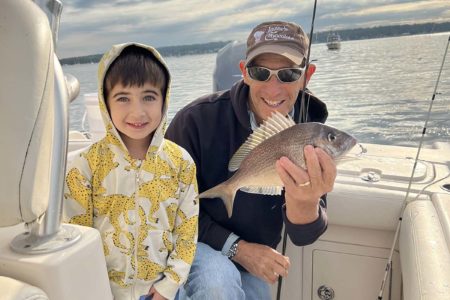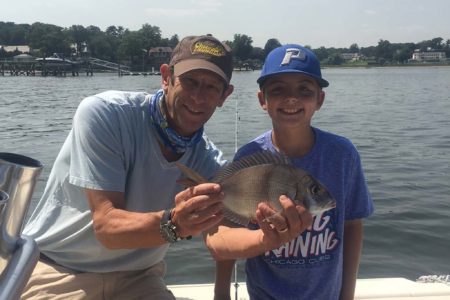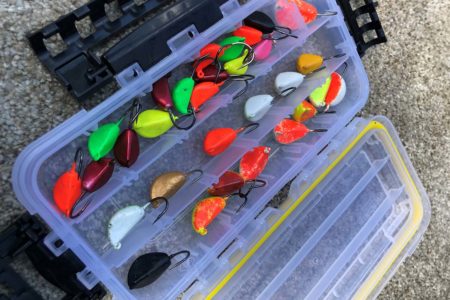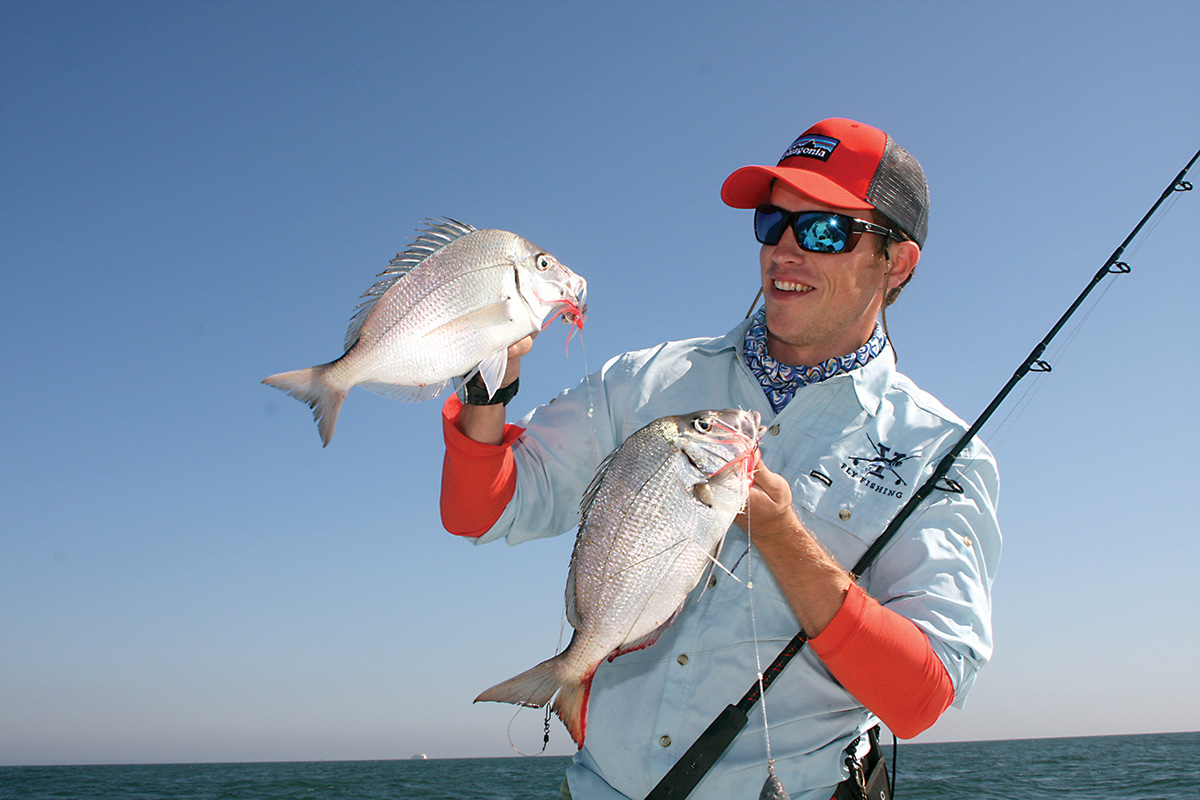
Porgies are best described as the saltwater equivalent of bluegills or sunfish. These flat, deep-bodied scrappers are easy to catch, fun for everyone and excellent eating. Pound for pound, porgies are extremely strong fish, especially when turned broadside to the current in deep water and matched with appropriate tackle.
Porgies, also called “scup” and “sea bream,” typically range in size from 1/2 to 2 pounds, with 3 or more pounds considered a trophy. Pros refer to larger specimens as “humpbacks” and “dinner plates” due to their size and pronounced meaty hump behind the head. Now is the time to prepare for the start of the bite.
“Porgies move into Long Island Sound in late May and June to spawn,” said Capt. Mike Stepski, owner of the Tartan II bottom-fishing boat out of Niantic. “During that time, they’re primarily on sandy bottom. After they spawn, they start to fetch up in the rocky bottom areas. You can catch them in these locations all summer, and by September they’re really taking hold, and the fishing is as good as it gets all year.”
You may think porgy fishing is simple, but for consistent action you can’t neglect the details. Like any other type of fishing, location is the primary element to success. While most sand bottoms and rocky structures hold scup, look for a broken bottom of mixed rock and shellfish beds—porgies love foraging on juvenile mussels. Passages between reefs and large, sandy holes in reefs are coveted hotspots. A local chart and depthfinder are helpful in pinpointing these locations, as is trial and error.
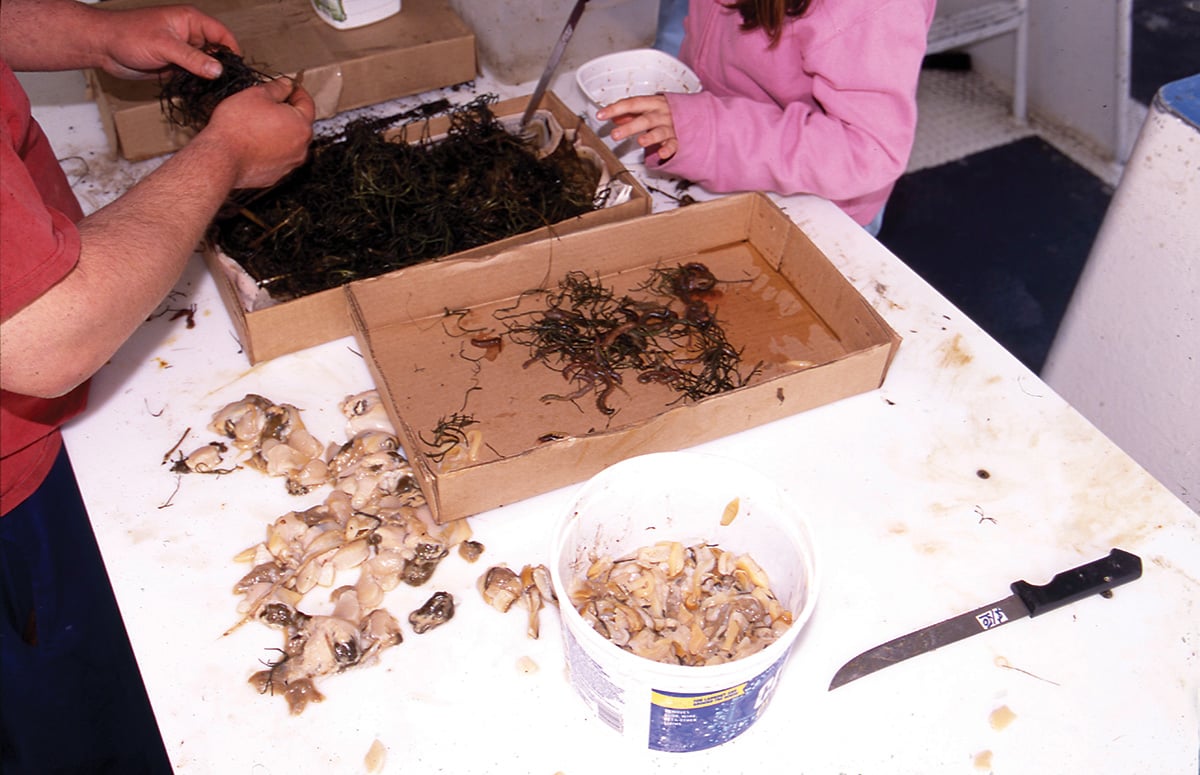
Shallow Water
Many scup are found from within casting distance of the beach to shallow structure or sand/gravel bottoms of 30 feet deep. In these areas, most anglers simply pick a spot over the structure, plop over the anchor and stay put. Porgies aren’t shy. After anchoring, the pros say if you don’t hook-up within 10 minutes you should move and re-anchor until you find a school. Although it’s more work, experts also recommend relocating if you find small porgies swarming your baits.
Another trick the pros use in shallower water is chumming. The best chum for porgies is crushed clams, mussels or periwinkles. Experts also like frozen, commercially-ground clam chum commonly used for winter flounder. In a pinch, even canned cat food or tuna will work. Place the chum in a small, weighted chum pot and lower it from the bow to the bottom on a sturdy line. Depending on current strength, the container may require several pounds of lead added to hold it vertically under the boat.
The pros set the pot from the bow, rather than the stern, to draw the fish closer under the boat where their hooks rest. This bow-rigging trick also helps prevent their hooks and lines from tangling with the chum pot. Give the chum pot a shake every 15 to 20 minutes to help release more particles into the current. And don’t forget to check the pot periodically for refilling. The idea here is to bring the porgies to your rigs, not vice versa.
Deep Water
“Deep” water is open to interpretation, but inshore waters like Long Island Sound or Buzzards Bay boast hot porgy spots in 30 to 100 feet. Some seasoned anglers drift for porgies where the waters are too deep or swift for reasonable anchoring. Drifting is an effective means of locating a school on open bottom and then anchoring on the cluster, if feasible, or using your tracking device on your GPS to repeat successful drifts.
Bait and Hooks
While porgies feed well throughout the tide, baits are best presented during the slow-current periods of one to maybe two hours on either side of slack tide. The baits of choice for scup are sandworms or clams; however, porgies are known for their bait-stealing abilities, especially the shorts. They are very aggressive and will often rip away soft baits before you have a chance to hook them. Squid is a popular bait alternative because it holds better on a tide-swept hook, is less expensive and smaller fish have more difficulty stealing it. By keeping it in a cooler, you can refreeze leftovers at trip’s end.
Experts fish two hooks to lessen the chance of a bare hook unknowingly picked clean, as well as to increase the chance of a double, of course. Multiple baits can draw multiple fish, and porgies become even more aggressive when competing for food. Therefore, not only multiple hooks but multiple anglers draw in the most action. Most scup anglers use at least two hooks and some use even three.
The downside, however, is adding too many hooks increases the chance of rig tangling and adds a new level of difficulty when unhooking multiple fish and rebaiting, as well as getting stuck with a hook. For this application, the new leader material called Perlon is stiffer than mono, and therefore creates droppers that stay more perpendicular to the main vertical leader. Perlon is found in straight shots of 50 inches in 40-pound test in shops like J&B Tackle in Niantic and River’s End in Old Saybrook. It is a truly superior material for this application.
In rocky areas when the bite is red hot, some pros revert to single hooks—as do some blackfish sharpies—to reduce tangles, speed turnaround time and lessen bottom hangs. A few experts prefer long-shanked hooks to aid in ease of unhooking, but I’ve found that porgies shy away from an unusually long shank.
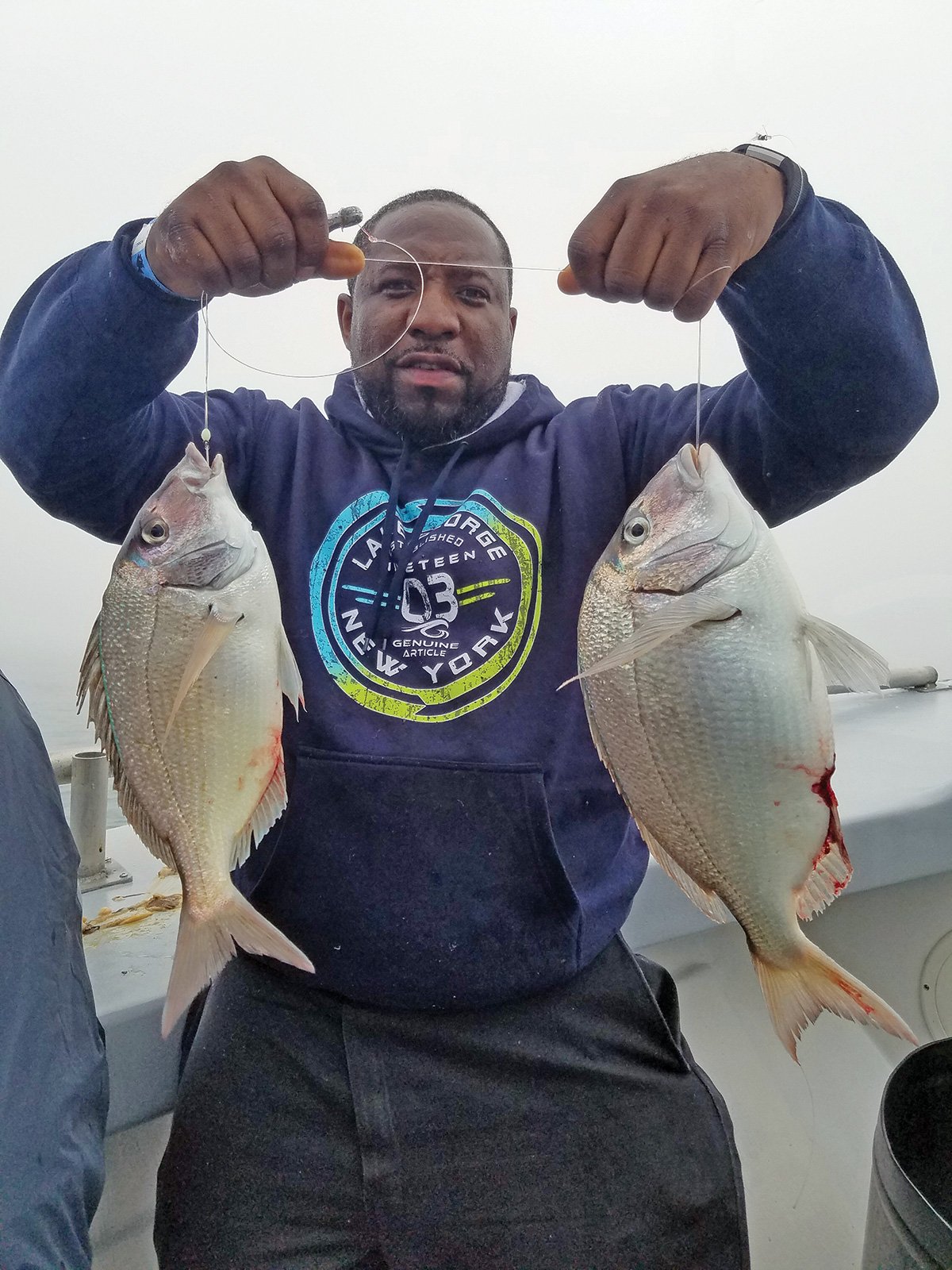
Porgy Rigs and Tackle
A typical high/low rig works well in most situations, with snelled hooks tied 8 inches apart above the sinker. Other anglers have success with a fish-finder rig: two snelled hooks tied about 8 inches apart on a short, 30- to 50-pound leader fastened to a swivel below a sliding sinker, which slides on the main line. Which rig you choose may depend on the current. During strong tidal flow, it’s best to have your baits less tossed about and hugging the bottom; then the fish-finder rig is ideal. But during slow current periods when porgies work up off the bottom they will target suspended baits so a high/low rig is more productive. Avoid peak moon tides, as tending bottom properly is nearly impossible even with the heaviest sinkers.
“If you can’t or don’t want to tie your own outfits,” said Jon Hillyer, fishing authority and owner of Hillyer’s Tackle Shop in Waterford, “a good pre-made porgy rig is the Fin Strike #461 with #2 or #4 beak hooks. Porgies are usually found in 15 to 60 feet of water around here, so sinker size with that rig will vary from 3 to 12 ounces, depending on tide and depth. You need to experiment and go with the lightest sinker that holds bottom.”
When targeting large humpy porgies, bypass the less expensive, “gold” porgy hooks because they often snap while fighting big fish or during the unhooking process. My hook of choice is the more expensive—but worth every penny—Fin Strike Pro-Series #2 snelled Gamakatsu bait-holder hooks. These hooks are not only much stronger and sharper, they resist rusting much better. Of course, the sea bass bite is hot nowadays, and having quality hooks will help you land bonus sea bass to round out a great day of bottom fishing.
If your goal is to weed out the smaller keeper porgies and only target truly large fish, try a Sabiki-style high/low rig as described above with two to three hooks adorned with an unweighted bucktail skirt or small plastic squid skirt, tipping the hook with squid or clam strip. Give the rig a slight jigging action, keeping the sinker bouncing off the bottom, and no more than 12 inches up at any time. And then hang on!
“An excellent choice for a porgy outfit,” said Pat Abate, fishing expert and previous owner of River’s End Tackle in Old Saybrook, “is a 6-1/2- to 7-foot Sea Striker Contour graphite rated for 12- to 20-pound line. This rod has enough feel to make porgy fishing really exciting, but it also has enough backbone to handle an average-size porgy sinker and haul a pair of big fish or a sea bass out of the rocks.” Abate says a good match to this rod is a Shimano Tekota 300 spooled with 15- to 20-pound braid for maximum sensitivity and minimum water resistance.
The best scup anglers have learned to leave a hooked fish near the bottom for a short period to allow and feel for a second fish to grab the other fluttering bait. The trick then is to set the hook again and fight a double-header. That’s when the real fun starts.
| ‘SOUND’ PRO PORGY PLAYERS |
|---|
| Capt. TJ Karbowski, Rock & Roll Charters, Clinton, CT Capt. Tony Notaro, Lucky Hook Charters, Clinton, CT Capt. Mike Stepski, Tartan II , Niantic, CT Capt. Greg Dubrule, The Black Hawk II, Niantic, CT Capt. Joe Devine,The Mijoy, Waterford, CT Capt. Bob Wadsworth, The Sunbeam Fleet, Waterford, CT Capt. Brad Glas, The Hel-Cat II, Groton, CT |

